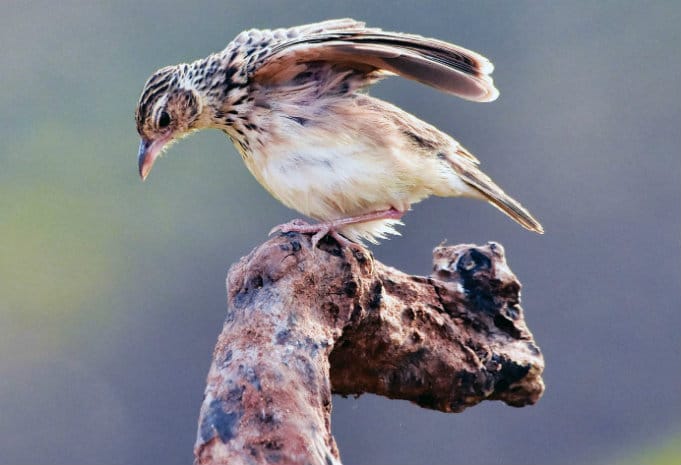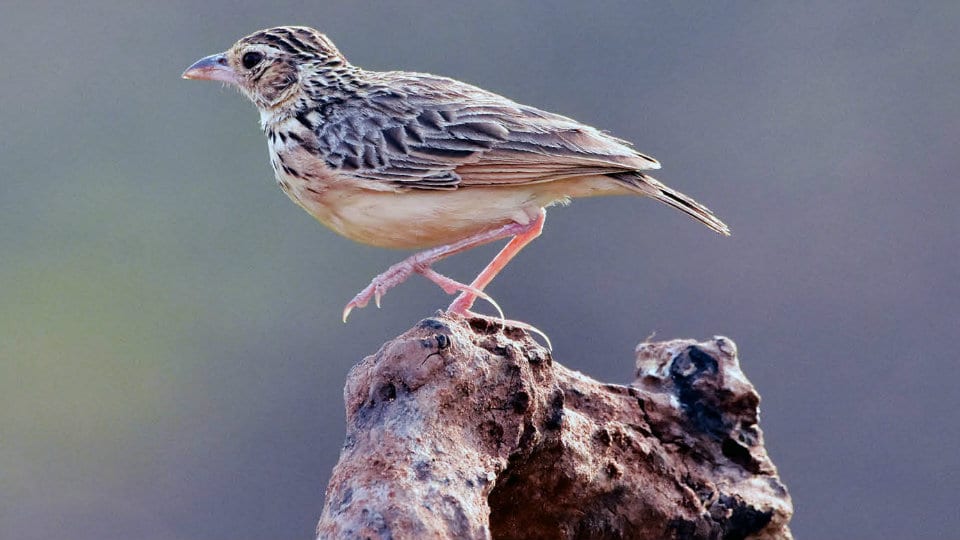Larks, the very name makes one recall the story of ‘The Lark & Her Young Ones’ studied by all in the Middle Schools, as an English prose in the text books. The moral of the story was to do things when the time is right, neither late nor early.
Larks, the Sparrow-sized birds, resembling the House Sparrow females a lot, are a tribe of close to 28 species in the country and five in our State.
The bird in the picture here, is the Jerdon’s Bushlark, with the Ornithological name as Mirafra affinis, a resident bird inhabiting dry and desolate habitats with close proximity to a lake or any small water source. The pasture land are the Larks favourite foraging ground, relishing the insects like crickets, worms, small beetles and the like. Brownish Grey birds, with darker markings on their upper-body with a light coloured underside, merge very easily into the surroundings. One hears a Lark first and then sights it. Their calls, a long drawn… Tweeeee… twitter… tweeeeeee… uttered from a perch on a small shrub, or a stone boulder or even a small clod of earth, is something interesting to watch.

While singing their long drawn calls, they are in fact communicating with other larks in the region. A sort of “I’m here… Where are you?” kind of dialogue between the Larks. Once the calls are answered, the Larks start another ritual, they fly straight up into the air for about 50 feet and then start descending down with open wings like parachutes. This upward flight and parachuting down, gives other Larks the exact location of each other. A wonderful behaviour of communication by sound and sight, shared by no other species.
Larks nest and breed in the grass lands, on the ground making a small cup like depression in the ground and lining it with dried grass fibre. The brood of 3-5 eggs are hatched in about 18 days of incubation and the chicks are fed and raised by only their mother. Father is only a protector. The chicks are fledged at around 3 weeks and they are ready for their life of their own.
Then the Larks life starts again with their high-noon serenades, the upward flight and parachuting down, continuing the lineage and eventually raising their next generation.
Though not endangered at the moment, with grasslands being degraded and utilised for urban expansion, the lakes and waterholes being choked and degraded, it may not be very far from now, before the splendid birds, the Larks vanish.
Save their environment… Save the lakes… You have saved an entire ecosystem… including the Larks.
—Ragoo Rao, [Pics by SOM photographer M.N. Lakshminarayana Yadav]








Recent Comments